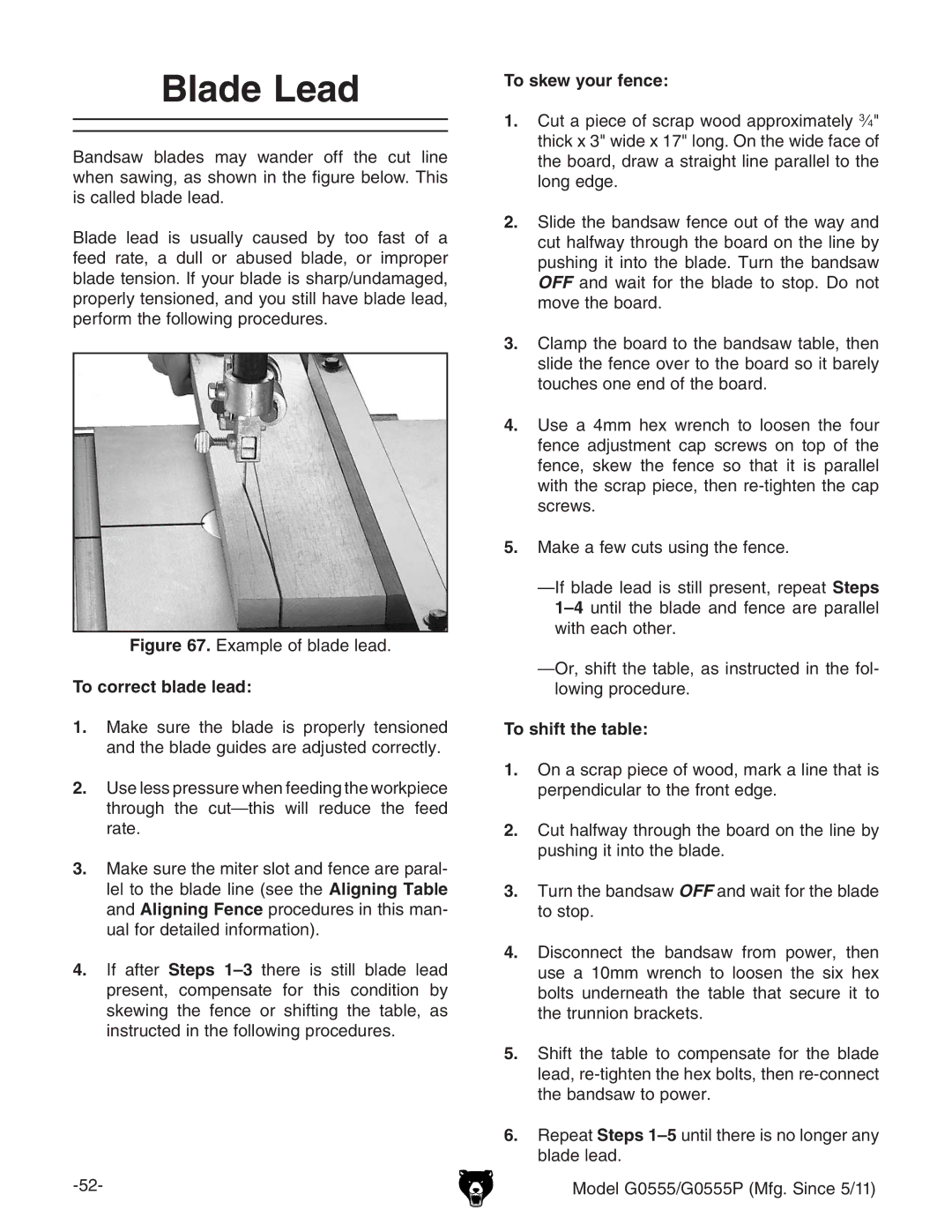
Blade Lead
Bandsaw blades may wander off the cut line when sawing, as shown in the figure below. This is called blade lead.
Blade lead is usually caused by too fast of a feed rate, a dull or abused blade, or improper blade tension. If your blade is sharp/undamaged, properly tensioned, and you still have blade lead, perform the following procedures.
Figure 67. Example of blade lead.
To correct blade lead:
1.Make sure the blade is properly tensioned and the blade guides are adjusted correctly.
2.Use less pressure when feeding the workpiece through the
3.Make sure the miter slot and fence are paral- lel to the blade line (see the Aligning Table and Aligning Fence procedures in this man- ual for detailed information).
4.If after Steps
To skew your fence:
1.Cut a piece of scrap wood approximately 3⁄4" thick x 3" wide x 17" long. On the wide face of the board, draw a straight line parallel to the long edge.
2.Slide the bandsaw fence out of the way and cut halfway through the board on the line by pushing it into the blade. Turn the bandsaw OFF and wait for the blade to stop. Do not move the board.
3.Clamp the board to the bandsaw table, then slide the fence over to the board so it barely touches one end of the board.
4.Use a 4mm hex wrench to loosen the four fence adjustment cap screws on top of the fence, skew the fence so that it is parallel with the scrap piece, then
5.Make a few cuts using the fence.
To shift the table:
1.On a scrap piece of wood, mark a line that is perpendicular to the front edge.
2.Cut halfway through the board on the line by pushing it into the blade.
3.Turn the bandsaw OFF and wait for the blade to stop.
4.Disconnect the bandsaw from power, then use a 10mm wrench to loosen the six hex bolts underneath the table that secure it to the trunnion brackets.
5.Shift the table to compensate for the blade lead,
6.Repeat Steps
Model G0555/G0555P (Mfg. Since 5/11)
